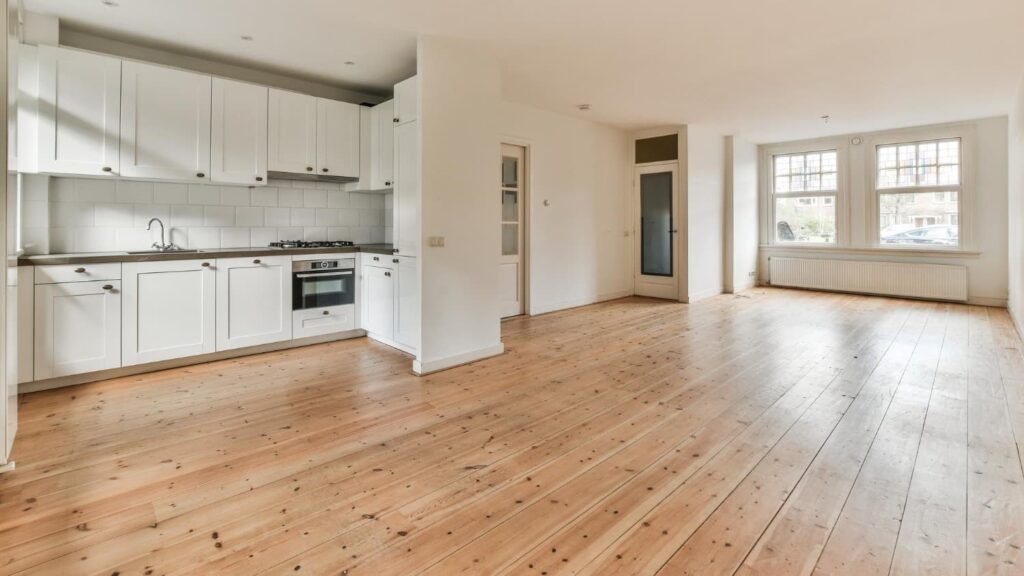Gas Leak: Why It Happens and What to Do
Gas leaks are a serious safety hazard that can lead to devastating consequences if not addressed promptly. From explosions and fires to health complications…

When designing a kitchen, one of the most important decisions is the flooring type. Kitchen flooring not only needs to be attractive but also functional. It provides a flat, comfortable surface for walking, standing, and preparing food.
With so many kitchen flooring options available, choosing the right one that fits your lifestyle and design preferences is essential. Common choices include hardwood, bamboo, vinyl, natural stone, and ceramic tile. Each type of flooring has its unique qualities, benefits, and drawbacks, making it crucial to understand the differences before making a decision.
Luxury vinyl tile (LVT) has become a popular choice for kitchen flooring, and for good reason. This durable flooring option is made from high-quality plastic, allowing it to convincingly mimic the look of ceramic, porcelain, or even hardwood. LVT provides an elegant appearance without the hefty price tag often associated with more expensive materials.
One of the standout features of LVT is its resistance to stains and scratches. This makes it an ideal choice for busy kitchens with common spills and heavy foot traffic. Unlike traditional tile, LVT doesn’t crack or chip, and it doesn’t require sealing or regrouting, making maintenance a breeze.
Porcelain and ceramic tiles are timeless kitchen flooring options. Renowned for their durability, these tiles are waterproof and resistant to stains, making them an excellent choice for any kitchen environment. They come in a variety of patterns and colors, allowing homeowners to find the perfect match for their kitchen décor.
These tiles can also mimic the appearance of more expensive materials such as hardwood or natural stone, providing a luxurious look without the associated maintenance. When selecting tiles, ensure they are rated for floor use, as some tiles are designed only for walls.
Hardwood flooring brings a warm and inviting atmosphere to any kitchen. While it was once thought to be unsuitable for kitchens due to moisture concerns, advancements in water-resistant sealers have changed that perspective. Today’s hardwood options are both beautiful and durable.
There are two main types of hardwood flooring: engineered and solid. Engineered hardwood includes a plywood core topped with a layer of hardwood, making it more affordable and stable. Solid hardwood consists of planks made entirely from wood and is often favored for its long-lasting quality.
Bamboo flooring is an eco-friendly alternative that mimics the appearance of hardwood while offering superior durability. It is naturally resistant to water and spills, making it an excellent option for kitchens. There are three primary types of bamboo flooring: engineered, solid, and strand woven, with strand woven being the most durable option.
While bamboo can be refinished, it lacks the natural grain patterns of traditional hardwood, so professional help may be needed for refinishing jobs.
Laminate flooring is a versatile and budget-friendly option that can mimic the look of hardwood without the high cost. It’s available in various colors and styles, including oak and hickory. One of the best features of laminate is its ease of installation, making it a popular choice for DIY enthusiasts.
Waterproof laminate options are perfect for kitchens, allowing for easy cleanup of spills with just a damp mop.
Natural stone tiles, such as granite, marble, and slate, provide a luxurious and durable kitchen flooring option. Each stone is unique, offering a distinct look that can elevate any kitchen’s design. Stone is incredibly tough and can withstand heavy use, making it a long-lasting choice.
However, natural stone can be porous and may require sealing to prevent stains and maintain its appearance.
Polished concrete is an innovative choice for modern kitchens. This flooring option is durable and incredibly stylish, providing a sleek and contemporary look. Polished concrete is easy to clean and maintain, making it a practical choice for busy families.
Polishing concrete enhances its durability and can be customized with different colors and finishes, allowing for a personalized touch in your kitchen.
When selecting kitchen flooring, consider several key factors to find the best option for your home:
Are you ready to renovate but unsure about the right kitchen flooring for your new design? It’s always a good idea to consult with professionals, especially for larger projects involving kitchen renovation and plumbing services.
If you’re in Surrey, Vancouver, Langley, or any area of British Columbia, consider reaching out to TaskPro for expert advice and assistance. They can help ensure the integrity and functionality of your kitchen design while guiding you through the flooring selection process.
Suitable options include engineered wood flooring, luxury vinyl tile (LVT), ceramic or stone tiles, and laminate. Each of these flooring options is water-resistant and can withstand the steam and temperature changes typical in kitchens.
Vinyl kitchen flooring is known for its easy maintenance. Spills can be wiped up easily with plain water, and regular mopping with a mixture of water and vinegar will keep your floors shining.
When choosing flooring color, consider your kitchen’s size. Light floors can help make a smaller kitchen feel more spacious, while dark floors can add a cozy and inviting feel to larger kitchens.
Share this Guide
Gas leaks are a serious safety hazard that can lead to devastating consequences if not addressed promptly. From explosions and fires to health complications…
Septic tanks are a vital component of wastewater management systems, particularly in areas where municipal sewer systems are unavailable. These underground structures treat and…
Choosing the right toilet for your home is more than a simple decision; it’s an investment in comfort, efficiency, and functionality. The type of…